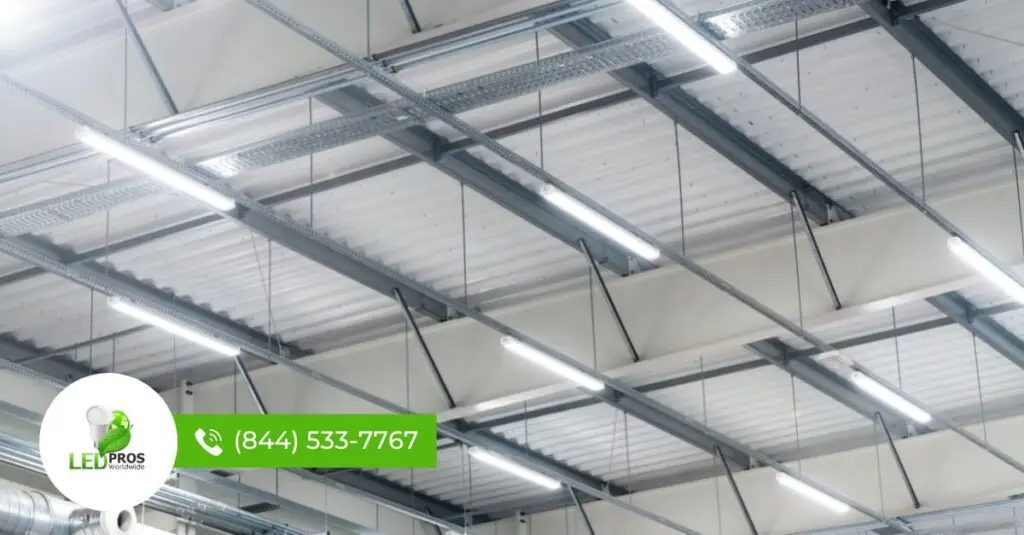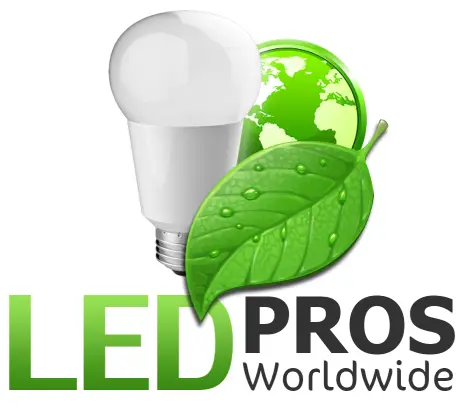In the world of commercial lighting, LED technology has emerged as a game-changer, offering unparalleled energy efficiency, durability, and versatility. As businesses increasingly prioritize sustainability and cost-effectiveness, LED building lights have become the go-to solution. But where exactly should you install these innovative lights to maximize their benefits? In this article, we’ll explore the best places to implement LED lighting in your commercial space, from low-bay areas to high-bay environments. Let’s shed some light on this illuminating topic!
The Advantages of LED Building Lights
Before we dive into the optimal installation locations, let’s quickly recap why LED lights have taken the commercial world by storm:
1. Energy Efficiency: LED lights consume significantly less energy compared to traditional lighting options, resulting in substantial cost savings on your electricity bills.
2. Long Lifespan: With an impressive lifespan of up to 50,000 hours or more, LED lights require fewer replacements, reducing maintenance costs and hassle.
3. Eco-Friendly: By consuming less energy and containing no toxic materials, LED lights minimize your building’s environmental impact.
4. Versatility: LED lights come in a wide range of colors, brightness levels, and beam angles, allowing for customized lighting solutions tailored to your specific needs. Read more about Understanding High Bay and Low Bay Lighting: Key Differences Explained here.
Low-Bay Lighting: Illuminating Smaller Spaces
What is Low-Bay Lighting?
Low-bay lighting refers to the illumination of spaces with ceiling heights of 20 feet or less. These areas often include offices, retail stores, classrooms, and workshops. In the past, inefficient strip lights or filament bulbs were the only options for low-bay spaces, resulting in wasted energy and suboptimal lighting. However, LED technology has revolutionized low-bay lighting, offering a more efficient and effective solution.
The Benefits of LED Low-Bay Lighting
By installing LED lights in low-bay areas, you can enjoy several advantages:
– Improved Light Distribution: LED lights can be strategically angled and positioned to maximize floor space illumination, eliminating shadows and dark spots.
– Enhanced Aesthetics: With their sleek design and customizable color options, LED lights can elevate the visual appeal of your low-bay spaces.
– Increased Safety: Well-lit workspaces reduce the risk of accidents and improve overall safety for employees and customers alike.
High-Bay Lighting: Illuminating Expansive Spaces
What is High-Bay Lighting?
High-bay lighting is designed for spaces with ceiling heights exceeding 20 feet, such as warehouses, factories, gymnasiums, and large retail centers. These expansive areas require powerful and efficient lighting solutions to ensure adequate illumination across the entire space.
The Advantages of LED High-Bay Lighting
Opting for LED lights in your high-bay spaces offers several benefits:
– Cost-Effective: While high-bay lighting typically demands powerful and expensive lighting solutions, LED technology significantly reduces energy consumption and costs.
– Targeted Illumination: By strategically placing high-powered LED lights, you can focus illumination on specific work areas, optimizing light distribution and minimizing wasted energy.
– Improved Visibility: LED high-bay lights provide bright, clear illumination, enhancing visibility and reducing eye strain for workers in expansive spaces.
Outdoor Commercial LED Lighting
In addition to indoor spaces, LED lights are also ideal for outdoor commercial areas such as parking lots, building exteriors, and signage. Outdoor LED lights offer:
– Durability: Built to withstand harsh weather conditions, outdoor LED lights provide reliable illumination year-round.
– Enhanced Security: Well-lit outdoor spaces deter criminal activity and improve safety for employees and customers.
– Attractive Aesthetics: LED lights can highlight architectural features and create inviting outdoor environments.
 |
Frequently Asked Questions
1. What is the best light for commercial buildings?
A: LED lights are widely considered the best lighting solution for commercial buildings due to their energy efficiency, long lifespan, versatility, and cost-effectiveness. read more about Guide to Popular LED Lights: Illuminating the World with Innovation here.
2. How long do commercial LED lights last?
A: Commercial LED lights can last up to 50,000 hours or more, significantly outlasting traditional lighting options and reducing maintenance requirements.
3. Are LED building lights more expensive?
A: While LED lights may have a higher upfront cost, their energy efficiency and long lifespan result in substantial cost savings over time, making them a cost-effective investment.
When it comes to commercial lighting, the debate between fluorescent and LED fixtures has been a topic of discussion for years. While LED technology has gained significant popularity in recent times, fluorescent lights still hold their own in certain aspects. Let’s take a closer look at how these two lighting options compare in terms of lifetime, lumen output, and light distribution.
Lifetime: The Endurance Race
In the longevity department, LED fixtures take the lead. With an impressive lifespan of up to 50,000 hours or more, LED lights outshine their fluorescent counterparts, which typically last between 7,000 to 15,000 hours. This means that LED fixtures require fewer replacements over time, reducing maintenance costs and minimizing disruptions in the workplace. However, it’s worth noting that high-quality fluorescent tubes can still provide reliable illumination for a considerable period, making them a viable option for businesses with tighter budgets.
Lumen Output: The Brightness Battle
When it comes to sheer brightness, fluorescent lights give LED fixtures a run for their money. Fluorescent tubes are known for their high lumen output, providing a powerful and consistent level of illumination across large spaces. This makes them particularly well-suited for high-bay areas like warehouses and factories, where intense lighting is essential for productivity and safety. On the other hand, LED fixtures offer a more focused and directional light output, allowing for targeted illumination in specific areas. While LED lights may not match the raw lumen output of fluorescent tubes, their precise beam angles and customizable options make them ideal for task-specific lighting and accent lighting.
Light Distribution: The Coverage Contest
In terms of light distribution, both fluorescent and LED fixtures have their strengths. Fluorescent lights are renowned for their wide and even light distribution, providing a consistent level of illumination across large areas. This makes them suitable for open-plan offices, retail spaces, and classrooms, where uniform lighting is crucial for comfort and productivity. LED fixtures, on the other hand, offer more flexible light distribution options. With the ability to direct light precisely where it’s needed, LED lights can be strategically placed to minimize shadows, reduce glare, and highlight specific features. This adaptability makes LED fixtures a popular choice for architectural lighting, display lighting, and task-specific applications.
The Final Verdict
So, which lighting option reigns supreme? The answer, as with most things in life, is not clear-cut. Both fluorescent and LED fixtures have their merits and drawbacks, and the best choice ultimately depends on your specific needs and priorities. If long-term cost savings, energy efficiency, and environmental friendliness are your top concerns, LED fixtures are the way to go. Their extended lifespan and low energy consumption make them a wise investment for businesses looking to reduce their carbon footprint and operating costs. However, if you require high lumen output and wide light distribution at a lower upfront cost, fluorescent lights may still be a suitable option, especially for large commercial spaces.
In the end, the decision between fluorescent and LED fixtures boils down to carefully assessing your lighting requirements, budget, and long-term goals. By weighing the pros and cons of each technology and consulting with lighting experts you can make an informed choice that illuminates your commercial space in the most effective and efficient way possible.
Closing Thoughts
When it comes to illuminating your commercial building, LED lights prove to be the shining stars. By strategically installing LED lights in low-bay areas, high-bay spaces, and outdoor environments, you can optimize energy efficiency, enhance safety, and create visually appealing spaces. With their long lifespan, cost-effectiveness, and eco-friendly nature, LED building lights are the smart choice for businesses looking to illuminate their way to success.
[gravityform id=”1″ title=”true” description=”true”]
